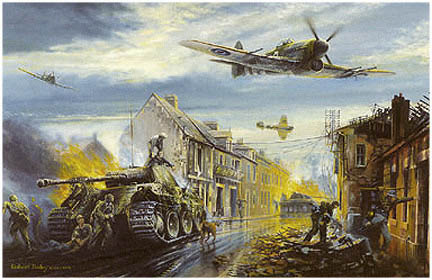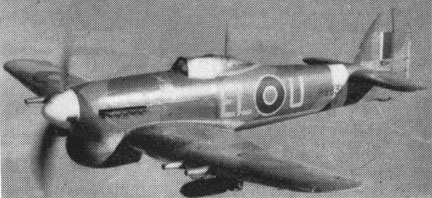| 'The Battle of Mortain, sandwiched neatly between Operation Cobra and the Falaise Gap, took place precisely at the most turbulent juncture of the Normandy campaign. Mortain was the first large-scale German counteroffensive against the American Army on the European continent. In effect, a miniature "Battle of the Bulge" occurred in and around that picturesque Norman town in August 1944. It is no exaggeration to liken Mortain to the Ardennes Offensive, as the scale and objectives of each are roughly comparable. Both operations featured massed panzer units designed to rapidly smash through thinly held American lines to seize critical objectives. While Mortain involved elements of six German panzer and panzergrenadier divisions racing to seize two bridges twenty miles from their line of departure, the attacking force in the Ardennes included the equivalent of thirteen panzer and panzergrenadier divisions heading for Antwerp, approximately 100 miles from their starting point. In both battles, the Germans hoped that success would regain the strategic initiative for them while dealing a serious military setback to the Allies.  One of the reasons why Mortain has been overlooked is that even key participants have often devoted only a few pages to this battle. Eisenhower, and Bradley, both intimate that the German counteroffensive could not have succeeded. German accounts echo these sentiments by claiming that Hitler's attempts to mandate every detail of the counterattack deprived the panzer divisions of a reasonable chance of success. This line of reasoning tends to minimize Mortain's importance by labeling it as an incidental or insignificant battle within the overall Normandy campaign. Capturing the individual soldier's experiences is necessary to understand the events that occurred at Mortain and during the Second World War as a whole. To overlook this viewpoint is to ignore that warfare is an intensely personal affair. A visit to one of the many German and American cemeteries in France will remind the reader of this fact. They contain thousands of soldiers who are forever eighteen. It is my hope that these young men who fought at Mortain and whose extraordinary efforts have not been fully appreciated in the scope of World War 2 historiography, will receive the recognition they deserve.' Charles R. Corbin Jr
 'The chief credit in smashing the enemy’s spear-head must go to the rocket-firing Typhoon planes of the Second Tactical Air Force. The result of this strafing was that the enemy attack was effectively brought to a halt, and a threat was turned into a great victory.' General Eisenhower, |







